There is a mini-renaissance going on in Indian football. With the FIFA U17 World Cup successfully organised, the AIFF has also submitted its bid to host the 2019 U20 World Cup. There is a constant improvement in the team's world rankings. Also, the 2019 AFC Asian cup is on the radar.
I choose to say 'renaissance' because India has seen some glory days in the international arena of football in the past. Our football team constantly punched above its weight till 1970. One can argue that luck was a huge factor those days. Sometimes, the opponents withdrew and many teams didn't participate due to tough situations.
We all know how India had decided against participating in the 1950 World cup. Despite facing many problems like funds shortage, India still played in many, if not all the tournaments. And as the saying goes 'fortune favors the brave'. Let us look at the 7 instances when India performed well ahead of expectations in international tournaments.
1948 London Olympics
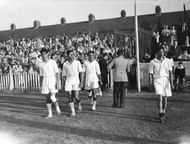
This was independent India's first international tournament. The Olympics were held after 12 years and it was the first major global tournament of football post-WWII, with the last World Cup being held in 1938. There were no qualification process. India, along with 22 other teams had shown interest to be a part of the tournament, which had 16 places up for grabs. Out of these 23, nine higher ranked teams were automatically placed in the first round, and the rest 14 had to qualify via the playoffs, with India being one of them. India were pitted against Burma (now Myanmar).
But Burma withdrew and India got a bye to the first round, where they were up against France. The match was played on 31st July, 1948 in front of a crowd of approximately 17000 in the Cricketfield stadium, Ilford. Most of the Indian players chose to play barefoot, and it was the curiosity to watch a match of shoes vs barefoot that attracted a seemingly large crowd. The chosen ones to represent India in this historic match were:
Line up: K. Varadaraj (GK), Taj Mohammed, Saliendra Manna, Basheer, Talimeran AO (C), Mahabir Prasad, Robi Das, Balaram Parab Ramachandra, Sahu Mewalal, Ahmed Mohamed Khan, Sarangapani Raman
Substitutes: Anil Nandy, B. Vajravelu, K. Dhanraj, Papen, S. Nandy, S. Kaiser, Sanjeeva Uchil
Coach: Balaidas Chatterjee (Ind)
(source: fifa.com)
India played a 2-3-5 formation. The first blood was drawn by France in the 30th minute courtesy a goal from Rene Courbin. But India struck back in the 70th minute with a goal from Sarangapani Raman. The Indian team was giving a tough competition to the French, which frustrated them. It showed on the field, as they conceded two penalties.
But surprisingly, both of them were missed by India. It came to haunt them later as a last gasp goal by Rene Persillon in the 89th minute was enough for the French to cling-on to a hard-fought victory. Although India lost the match, but the team's play was lauded by all. Had those two chances been taken, the story of Indian football might have taken a different route, but it was not to be.
1951 Asian Games, Delhi
The 1st Asian games were held in 1951 in Delhi. It was held five years before the official AFC Asian Cup started in 1956. So this was the first continental championship of Asia. And the first Asian champions was INDIA.
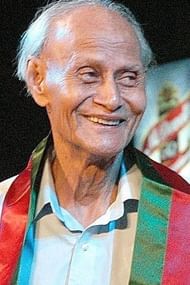
All the matches were played at the National Stadium, Delhi. Eight teams were expected to participate, but only six teams, Afghanistan, Burma (Myanmar), Indonesia, Iran and Japan joined the host India. The Indian team for the tournament was as follows:
Goalkeepers: B. Anthony, K.L. Varadaraj.
Backs: Sailendra Nath Manna(C), Syed Khwaja Azizuddin, T.M. Varghese [alias Papen], Sunil Chatterjee.
Half Backs: Abdul Latif, Noor Mohammed, Chandan Singh Rawat, Abhoy Ghosh, D.N. Jones, T. Shanmugham.
Forwards: Pansanttom Venkatesh, G.Y.S. Laiq, M.A. Sattar, P.B.A. Saleh, Runu Guha Thakurta, Sahu Mewalal, Santosh Nandy, M. Ahmed Khan, Loganathan, A.M. Bachan.
Coach: Syed Abdul Rahim; Manager: Kartick Chandra Mukherjee
(Note: Squad information courtesy indianfootball.de)
The match duration for the tournament was 60 minutes. It started directly from the quarter-finals, with Afganistan and Japan getting a bye to the semis. India played Indonesia in the quarters, beating them 3-0. Mewalal scored a brace in the 27th and 42nd minute, with Venkatesh applying the finishing touches in the 44th minute.
In the semis, India faced Afganistan and comfortably won the match 3-0, with Venkatesh, Mewalal and Nandy on the scoresheet in the 10th, 16th and 55th minutes respectively. The other semifinals saw Iran beating Japan. The final with Iran was a tight contest, but Sahu Mewalal’s 34th-minute strike was enough for India to clinch the gold medal on home soil. The performance of Indian team, in which many players played barefoot, was so emphatic that not a single goal was conceded by them!
1956 Melbourne Olympics
This Olympics campaign was historic for Indian football, as India became the 1st Asian team in the Olympic history to qualify for the semifinals. 28 teams had shown interest for the 16 spots, where 4 teams, including the hosts, got automatic qualification. Of the remaining 12 places, Asia was allotted 6 places, with 12 teams in contention. India was drawn against Thailand, but both the teams got a bye as Iran and Afghanistan, who were to face each other, withdrew simultaneously.
The Indian team for the Olympics was as follows:
Peter Thangaraj (GK), Samar Banerjee (C), Krishna Kittu, Pradip Kumar Banerjee, Muhamed Kempiah, Muhamed Kannayan, Abdul Rahamal, Syed Khaja Aziz, Noor Mohammed, Muhamed Abdus Salam, Neville D Souza, Husain Ahmed, Krishna Pal, Nikhil Nundy, Shaikh Abdul Latif, Subramaniam Narayan
Coach: Syed Abdul Rahim (Ind)
(source: fifa.com)
In the first round, India were drawn against Hungary but got a walkover to the quarter-finals, where they had to face the host Australia. Against Australia, India took the lead twice through first-half goals by D'Souza in 9th and 33rd minute. But the Australians levelled both the times courtesy a brace from Bruce Murrow in the 17th and 41st minute. In the second half, D'Souza completed his hattrick in the 50th minute. Krishna Kittu wrapped up the scoring with a fourth in the 80th minute. Final score: 2-4 to India, which made them the first Asian country to qualify for the semi-finals of Olympic football.
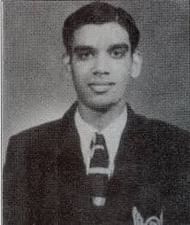
In the semis, India faced Yugoslavia, who were the runner-ups in previous two editions. Interestingly, Yugoslavia had humiliated India 10-1 in the 1952 Olympics preliminary round. The first half of the encounter was goalless. In the second half, India took a surprise lead from D'Souza's goal in the 52nd minute. But the joy was short-lived. Three goals from the Yugoslavians in quick succession dashed all the hopes of a fairytale ending. An own goal from Salam in the 78th minute added to the woes of the Indians. Final score, 1-4 to Yugoslavia.
In the bronze medal's match, India faced Bulgaria and lost 3-0. Thus, India faltered at the last moment and finished fourth in the tournament, which is their best performance in the global event to date. Neville D'Souza became the first Asian to score a hattrick and be the top-scorer (joint) in Olympics football. He is the only Indian to achieve this feat in an international tournament.
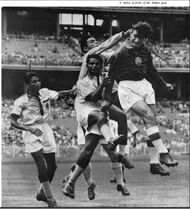
1960 Rome Olympics
There were 15 spots up for grabs in the 1960 Olympics, as hosts Italy automatically qualified. Out of those 15, two were allotted to Asia. Eight Asian teams were in contention. India faced Afghanistan in the 1st round and easily progressed to round 2, where they faced Indonesia in a two-legged tie, with the winner qualifying for Olympics. India defeated them 6-2 on aggregate and qualified.
The 16 qualified teams were divided into 4 groups of 4 teams each. India were drawn in the tough group D comprising France, Hungary and Peru. Nobody had any expectations from the Indian team, whose line-up was as follows:
Peter Thangaraj (GK), Jarnail Singh, Shaikh Abdul Latif, Mariappa Kempaiah, Menon Chandrasekhar, Chhettri Ram Bahadur, Pradip Kumar Banerjee, Subimal Goswami, Yousuf Khan, Simon Swamidas Sunderraj, Tulsidas Balaraman, Arun Ghosh, Dharmalingam Kannan, Fortunato Franco, Habibul Hamid, Malay Kumar Lahiri, Mundiyath Devadas, Subramaniam Narayan, Syed Shahid Hakim
Coach: Syed Abdul Rahim
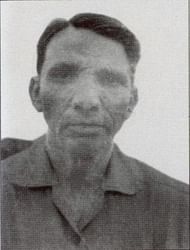
India faced Hungary in the first match. Hungary took a 2-goal lead by the 56th minute. But Balaram cut the deficit to half on the 79th minute. India pushed for an equaliser, but it was not to be and the final score remained 2-1 in favour of Hungary.
In the 2nd match, India faced France and took the lead in the 71st minute through a goal from Banerjee. But France struck back in the 82nd minute. The final score remained 1-1. It was a great result for India, considering the opponent.
India's last match was against Peru. This match was inconsequential as only the top team was to progress, and both the teams were out of contention. India lost the match 3-1.
Although India failed to qualify further and remained at the bottom, it was hailed as a better performance than the 4th placed-finish of the 1956 Olympics by many. India faced tough opponents and gave them a great fight. Especially the draw against France was a big achievement.
1962 Asian Games, Jakarta
In the 1962 Asian games, a total of 11 teams participated in football. But Taiwan and Burma withdrew and Indonesian government refused to issue visas for Israel. So, the teams reduced to eight and were divided into two groups. India were in group B along with Japan, Asian champions South Korea and Thailand.
Squad
Goalkeepers: Peter Thangaraj, Prodyut Burman
Backs: O. Chandrashekar, Jarnail Singh, Trilok Singh, Arun Ghosh, D.M.K. Afzal
Half Backs: Fortunata A. Franco, Ram Bahadur, Prasanto Sinha
Forwards: P.K. Banerjee, Chuni Goswami(C), Tulsidas Balaram, Ethiraj, Mohammed Yousuf Khan, Arumai Nayagam
Coach: Syed Abdul Rahim Manager: Nurul Amin

India lost their first match to South Korea 2-0. In the next match against Thailand, India won 4-1 with goals from Chuni Goswami, Tulsidas Balaram and a brace from P.K. Banerjee. In the final group game against Japan, India produced a fine team performance to win 2-0 with Banerjee and Balaram getting on the score-sheet. India finished second in the group behind South Korea and qualified for the semi-finals.
India were pitted against South Vietnam in the semis and edged out a 3-2 victory in a five-goal thriller. In the finals, India were again going to face the reigning Asian champions South Korea. This time, the Indian team avenged the group-stage defeat with the score-line of 2-1 and again won the gold after 1951.
1964 AFC Asian Cup, Israel
India was one of the founding members of AFC in 1954, which conducted the first Asian Cup in 1956. Till the third edition in 1964, it used to be a four-team, round-robin tournament. The 18 AFC members were divided into three zones, namely central, eastern and western. The winner of each zone would join the hosts in the main tournament.
India decided against participating in the first edition. In 1960, they finished last in western zone and failed to qualify. In 1964, the western zone comprised of five teams, out of which Afghanistan, Ceylon (Sri Lanka) and Iran withdrew. India, along with Israel, were among the only teams left. But Israel were the hosts, which left India to represent the western zone.
India made its maiden Asian Cup participation along with champions of previous two editions South Korea, 1956's third-placed team Hong Kong along with hosts Israel. The Indian squad was as follows:
Peter Thangaraj (GK), Menon Chandrasekar, Fortunata Franco, Prasanto Sinha, Arun Ghosh, Mohammed Yusuf Khan, Jarnail Singh, Chuni Goswami, Inder Singh, K. Appalaraju, Arumai Nayagam (GK), S.S. Narayan, Mritunjoy Banerjee, Syed Nayeemuddin, Ram Bahadur, Kajal Mukherjee, H.H. Hamid, Sukumar Samajapati.
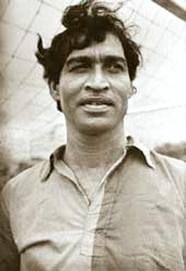
There were two points for winning. In their first match, India defeated the champions South Korea 2-0, with the goals from Appalaraju and Inder Singh in the 2nd and 57th minute respectively.
In the 2nd match, India were up against the hosts Israel but lost the match 2-0. Hong Kong were out of contention by the time they played their last match against India, as they had lost both of their matches. India were still in contention and they did their part by beating Hong Kong 3-1. Thus, getting 4 points with +2 goal difference(GD).
In the final match of the tournament, Israel were up against South Korea, with both of them, along with India, had the chance to lift the trophy. Israel were in the driver's seat as they had 4 points with +3 GD. South Korea had 2 points and -1 GD. So, for India to win, Korea had to defeat Israel by a margin of 2 goals. But it was not to be as Israel came out 2-1 winners. India had to be content with the runners-up position. Till date, this is the best performance of India in the AFC Asian Cup. Inder Singh was the joint top-scorer in the tournament.
1970 Asian Games, Bangkok
There were ten teams competing, with two groups of three and one group of four. The top two teams in each group advanced to the quarter-final's group stage and then, the top two of each group in that round progressed to the semis. India was drawn alongside the hosts Thailand and South Vietnam.
Squad
Goalkeepers: Kuppuswami Sampath, Bandya Kakade
Backs: Sudhir Karmakar, Syed Nayeemuddin(C), Chandreshwar Prasad, Nirmal (Jhunu) Sengupta, Altaf Ahmed, Shivdas, Kalyan Saha
Half Backs: A. Latif, J. Bassi, Doraiswamy Nataraj, Ajaib Singh
Forwards: Shyam Thapa, Subhas Bhowmick, Mohammed Habib, Amar Bahadur, Magan Singh, Manjit Singh, Sukalyan Ghosh Dastidar
Coach: GMH Basha Manager: PK Banerjee
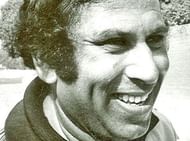
India started the campaign with a 2-2 draw against Thailand and Bhowmick was the star performer as he bagged a brace. The next day India faced South Vietnam and defeated them 2-0 thanks to the goals from Habib and Manjit Singh. In the quarter-final's group, India were drawn with Japan and Indonesia. India started well as they won 3-0 against Indonesia with the goals from D Natraj, Magan Singh and Thapa but a narrow 1-0 defeat to Japan saw them progress to the semis as the quarter-final's group runners-up.
Burma were the opponents in the semi-finals and they proved too strong for India, winning 2-0. Now, India had to face Japan in the bronze medal's match. Japan came into the game as favourites, having won previously when these 2 nations met earlier in the competition. But India produced a gritty display to edge-out a narrow 1-0 victory, winning the bronze. This was the last medal won by India in football.
